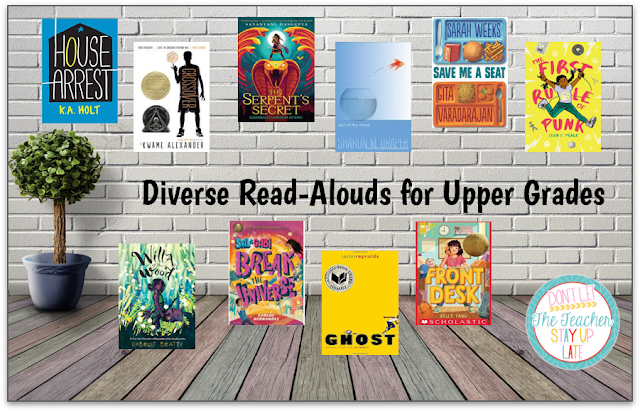For a long time, I read almost exactly the same books every year, and that was kind of okay. The kids enjoyed the books, and they were quality novels that created community and even provided good conversation. However, there were three issues with this system:
1. After some time, I started to tire of some of the books.
2. Even more importantly, I wasn't considering or even really noticing is that most of my books featured the same types of characters. And they were almost always white boys.
3. I also tended to select books from my favorite few genres (for me, realistic and historical fiction). I may get one fantasy book in the year.
Now I try to be much more intentional about what I select. Thanks to Facebook pages such as We Need Diverse Books and also some amazing Instagram friends, I am constantly adding new books to my library and pulling many of them into read alouds. That doesn't mean I completely abandon old favorites. I just mix them in with other new, great books.
Things to Consider When Choosing Your Next Book
1. What have I already read? To this day, I STILL begin each year reading Louis Sachar's There's a Boy in the Girl's Bathroom. It is one of my all-time favorite books, and I think it has some fantastic lessons about friendship. However, for a while I went from that to Wonder (also a fantastic book). Two books in a row about friendship, but they're both realistic fiction with white male leads. It's time to change things up a little after that, or maybe even earlier. It might not be a bad idea to make a list of the books somewhere and include the genre and main character.
2. What is the makeup of my classroom? It's SO important that students see themselves in books, so you should work especially hard to find books to match your school's population. For me, I keep a very close eye out for books with Indian and other Asian main characters (there are a few in the graphic above that I personally love, but I can point you toward more if you're interested). Do your research. Ask around. Find teachers from those backgrounds, whether they're at your school or on social media.
**This does NOT mean that you shouldn't find books to represent students who are not in your classroom. It's almost as important that our students learn more about people they don't already know also. It helps them work through biases they might have without even realizing it.
3. Who wrote the book? Not all books with diverse characters are good representations. For instance, Stone Fox would not be a good choice for representing Native Americans. A good place to start is looking at who wrote the book. Ideally, you want people of color writing about their own culture. They would be the experts, after all. Rick Riordan Presents is a branch of Disney-Hyperion Publishing that works to publish and promote fantasy books with underrepresented cultures. I've read a little over half of these books already, and they are FANTASTIC. The Serpent's Secret actually is not part of that series, but I read it with my class a few years ago, and it was so cool to hear from my Indian students as they explained more background with some of the mythological elements.
4. Is it good for my class right now? There are some years that I know my class is not going to be able to handle certain books as a read aloud for whatever reasons (that doesn't mean I can't use it for book clubs). As much as I love The Crossover, if I have a student who recently lost a parent, I'm not going to pull that one. Or the style just might not appeal to that specific group. It's best to pre-read your books so you know what to expect and can plan accordingly.
5. Can I commit to this book and show excitement about it? If you aren't invested and excited, your students won't be either. It's not good for anybody.
What are your favorite read-alouds? What are some great new titles you've discovered that I maybe didn't add above?


















